Nina Notman asks whether chemists should be giving more consideration to the ethics of their research
For around 2000 years, medical students have recited the Hippocratic Oath as they graduate. Today, the popularity of this tradition may have waned but the majority of UK medical schools do still include an ethical oath of some form in their graduation ceremonies. ‘First do no harm’ is the central principle of all these oaths. And while their opponents lament their lack of legal clout, their proponents view ethical oaths as giving new doctors a moral compass to help guide them throughout their careers.
It has long been acknowledged that medics are not the only scientists regularly faced with ethical dilemmas. In 1532, for example, French writer François Rabelais – himself a doctor – said that ‘science without conscience is but the ruin of the soul’. The possibility of an oath for scientists and engineers has been discussed numerous times over the years, but none have come close to being implemented. Some of the concerns raised include oaths having the possibility to constrain the advancement of research. But might one make us more likely to stop and think about the ethics of what we are about to do? As Rabelais implied and Jurassic park emphasised: just because you can do something, doesn’t mean you should.

A licence to practice scientific research – another idea borrowed from the medical profession – has also been unsuccessfully suggested to date. ‘All a licence to practice does is give you a licence to sue,’ explains Jeffrey Kovac, a chemistry professor at the University of Tennessee in the US and author of the book The ethical chemist: professionalism and ethics in science. ‘It’s not clear to me that it would do much to make chemists any more honest: lawyers are not any more honest because they’re licensed.’
Research ethics
Researchers in all scientific disciplines can find themselves facing common ethical dilemmas that include temptation to plagiarise, not acknowledging prior work to make own research appear more novel, falsifying data, publishing before ensuring reproducibility, misuse of grant funds, ignoring regulatory requirements, health and safety lapses and even harassment of junior researchers.
Many scientific frauds are linked to publishing. Jan Henrik Schön, a postdoc at Bell Labs in New Jersey, US, is a notorious example. In the early 2000s, his rising superstardom in the nanoelectronics field came to a grinding halt when identical graphs were spotted in three of his unrelated papers. An investigation found him guilty of 16 counts of scientific misconduct including falsifying, duplicating and deleting data. Retractions included eight papers in Science and seven in Nature.
It’s not enough to give somebody a code of ethics and expect them to know instantly what it means
Kabrena Rodda, PNNL, US
It’s easy to view Schön as a rogue physicist working in isolation, but it’s disingenuous to do so. Enablers such as his supervisors, colleagues and the journals that published the work also played a role, explains Kovac. This is also true in other standout examples of publishing fraud, such as that of chemistry professor Pattium Chiranjeevi, from Sri Venkateswara University in the Indian state of Andhra Pradesh, who plagiarised or falsified results in more than 70 articles published in national and international journals between 2003 and 2007.
The flawed ‘publish or perish’ system is often another contributing factor to publishing fraud. ‘There is so much more pressure on people today to publish in high impact journals,’ explains Christophe Copéret, an organometallic chemistry professor with an interest in ethics at the Swiss Federal Institute of Technology in Zurich. Scientists and universities are now mostly judged (and funded) based on their publishing output, he says. There are also too many journals and a lot of pressure to publish and review fast in his view. ‘How to stop this trend is not obvious.’

A number of surveys have sought to determine what proportions of scientists commit research misconduct. In a 2018 survey, 71% of biomedical academics in Belgium admitted to at least one case of research misconduct. A 2009 meta-analysis of surveys found that a more conservative 2% of scientists admitted to fabricating, falsifying or modifying data at least once, and up to 33.7% confessed to other questionable research practices. What counts as a questionable research practice versus misconduct is subjective, and may partly explain differences in survey outcomes, as will the exact questions asked.
Unintended consequences
But being an ethical chemist is more than just aiming for impeccable scientific conduct. Synthetic chemists make thousands of new molecules every year with the hope they may prove of benefit to humankind (and make some money for themselves and their employers while doing so). But molecules designed for the greater good can potentially end up causing harm. This is normally unintentional, as was the case with polychlorinated biphenyls (PCBs).
First manufactured in the late 1920s, PCBs found hundreds of commercial applications thanks to their non-flammability, stability and electrical insulating properties. Fifty years later it was realised that PCBs do not readily breakdown in the environment and traces of these now-banned molecules have since been found all over the world. They are carcinogenic and accumulate in food crops, small organisms and fish that are then eaten by humans. ‘Going back to the chemist that invented these, there’s no direct responsibility,’ explains the UN’s Frank Moser. Moser has a PhD in ethics and chemistry and is a programme officer for the secretariat of the Basel, Rotterdam and Stockholm environmental agreements. ‘But I think that if you are aware of the societal impact that your work in the laboratory may potentially have, your role as a scientist changes.’
PCBs were not intentionally used nefariously, but some innocent molecules have intentionally been turned bad. Alfred Nobel’s dynamite is an early example. Patented in 1867 for use in the mining and construction industries, it soon found use in warfare. It is not known whether Nobel approved of its military use, but other chemists have overseen molecules finding their dark sides. Chlorine is one example. It has numerous industrial applications including its use in water treatment that has been ongoing since the 1850 cholera outbreak in London. On 22 April 1915, German chemist Fritz Haber supervised the unleashing of 168 tons of chlorine on Allied forces near Ypres, Belgium. Thousands of troops were killed or wounded in the attack. Chlorine is still used as a weapon of war today.
Most people know when they see an ethical dilemma, but they don’t always know how to speak up
Blair Marks, Lockheed Martin
The possible dual-use of the fruits of our research isn’t unique to chemistry. In the biosciences the potential for virus-modifying technology to be used by bioterrorists is a particular concern, but awareness of this issue is fairly high among this community. Most chemists, however, tend not to think too hard about the potential dark future for the molecules we make. ‘For a synthetic chemist the thrill of making something new is pretty intoxicating; the thought that it could eventually be used in an ethically questionable way rarely occurs,’ says Kovac.
So should the chemistry community follow the biosciences’ lead and start thinking harder about the possible dark side of what we do? ‘My position would be that anybody who makes a molecule should be thinking about its possible misuse,’ Kovac says. This is also the view of the global chemical weapon’s watchdog, the Organisation for the Prohibition of Chemical Weapons (OPCW).
Emerging ethical dilemmas in chemistry
Human germline gene editing
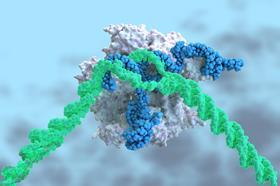
What is it?
Changing a person’s genome in such a way that the edit passes to future generations. The gene editing tool Crispr (clustered regularly interspaced short palindromic repeats) supersedes previous techniques in terms of speed, ease, accuracy and price.
In April 2015, Chinese scientists announced the first attempt at using Crispr to edit genes responsible for inherited diseases in (non-viable) human embryos. A handful of similar research studies in China and the US have followed.
Why is it controversial?
‘If we allow this technology to be used to create heritable changes in humans, we change the way people are forever,’ explains Alan Regenberg, director of outreach and research support at the Johns Hopkins Berman Institute of Bioethics in the US. There is a lot of debate about whether this constitutes ‘playing God’ and could lead us down the path to designer babies and Nazi eugenics.
And unlike gene therapy – transforming the lives of an increasing number of patients previously living with devastating diseases – germline gene editing would directly impact a future people that don’t exist yet. ‘This raises concerns that are different to if you have a person who can consent to undergo an experimental procedure,’ Regenberg says.
How is it governed?
It varies. While many countries ban embryo editing for reproduction, a few such as the UK have licensing procedures, and others including the US and China don’t have federal laws specifically preventing its use in research. ‘The ideal here would be to have some sort of international agreement,’ says Regenberg. There have been dozens of international meetings and reports on how to achieve this. The International Summit on Human Gene Editing in Washington DC in late 2015 was the most significant to date.
‘At the very least the relevant players – the journal publishers, funders and the scientists themselves – need to work together to create a system that rewards a work done under appropriate oversight and discourages work that dashes forward outside of any kind of constraints,’ Regenberg adds.
Solar geoengineering

What is it?
Techniques that could boost the Earth’s reflectivity and potentially reduce the intensity of the sun’s rays hitting the planet’s surface. This approach is also known as solar radiation management.
Volcanoes already cool the atmosphere by injecting sulfur dioxide into the stratosphere, which then converts into reflective sulfate aerosols. Scientists are looking to mimic this, delivering reflective particles into the stratosphere using a balloon or plane. Other ideas include spraying reflective particles into stratocumulus clouds, huge space mirrors and planting more reflective crops.
No field experiments have taken place so far. A group at Harvard University in Massachusetts, US, is planning the first in 2018 at a site near Tucson, also in the US.
Why is it controversial?
Many reasons. The development of potential mitigation or adaption tools could offer humanity an opt-out from doing what it should be doing to tackle climate change – reducing emissions. ‘Our problem is not that we lack feasible options to do things about this problem, it’s that we are in a context where we haven’t acted it to do most of those things,’ says environmental ethicist Stephen Gardiner of the University of Washington in Seattle, US. Proponents of the research say every tool in the box is needed to tackle global climate change.
Unintended impacts or uncertainties are another issue. The Earth’s climate system makes geoengineering regionally impossible; any climate intervention will impact on the entire planet. Computer modelling suggests some countries will be impacted more than others, with the Asian monsoon a particular concern. ‘People are also worried that solar geoengineering could potentially be used as a weapon of war,’ explains Sikina Jinnah, a politics professor at University of California at Santa Cruz in the US. ‘Countries could potentially use it as a way to control weather patterns in other countries.’
How is it governed?
It isn’t. Many people think it should start to be in the near future. The possibility of a code of conduct for geoengineering has been proposed and a number of voluntary initiatives are emerging.

Sample-return space missions
What is it?
The collection of soil and rocks samples from other celestial bodies and returning them to Earth for a more in-depth chemical analysis than can be achieved in situ. To help determine whether Mars harbours life – or has done in the past – a number of space agencies plan to collect samples from Mars and return them to Earth.
Why is it controversial?
Probes destined to land on parts of Mars and other planetary bodies thought to potentially host life undergo a higher level of sterilisation than that used in operating theatres. It’s not possible to effectively hunt for alien life forms in an area contaminated with human microbes. There are also ethical questions about whether it’s OK to contaminate another planetary body with Earth’s bugs.
But what about Martian samples returned to Earth, is it OK that they might pose a danger to terrestrial life? How could you minimise this risk? ‘It’s an open debate,’ explains Jacques Arnould, ethics advisor to the French space agency CNES. Sterilising the sampleswould lose a lot of data from the scientific perspective and might not be effective against Martian microbes. ‘You cannot say it’s only a scientific debate,’ he says. ‘We are entering into a more ethical discussion.’
How is it governed?
It’s work in progress. The International Council for Science’s Committee on Space Research (Cospar) who is responsible for interplanetary contamination prevention is looking into possible suitable protocols, says Arnould.
New guidelines
Chemists today are expected to be aware of a bewildering number of different codes of ethics (which are aspirational) and codes of conduct (which are enforceable) written by organisations including universities, companies, research councils, government departments, scientific societies, professional bodies and academies of science. In 2015, the OPCW compiled a list of 140 different codes of ethics and conduct related to the practice of chemistry from across the globe. ‘This list was not comprehensive,’ explains science policy adviser Jonathan Forman, based at the OPCW’s headquarters in the Netherlands.
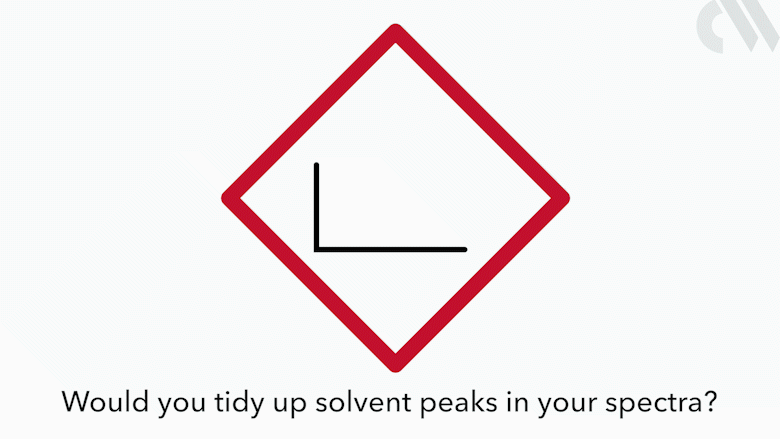
The OPCW were reviewing existing codes in support of workshops where chemistry practitioners from 25 countries met to produce The Hague Ethical Guidelines. These universal guidelines were designed to be used in the preparation of ethical codes for chemists. ‘They provide a framework – a coat hanger – on which others can develop specific codes,’ explains Alastair Hay, a professor of environmental toxicology at the University of Leeds in the UK who helped develop the guidelines. The main message of The Hague Ethical Guidelines is that ethical codes should promote peaceful use of chemistry. Protecting the environment and ensuring laboratory safety also feature.
The International Union of Pure and Applied Chemistry (Iupac) quickly endorsed and agreed to promote the guidelines. In April 2016, the American Chemical Society (ACS) used the guidelines to develop the Global Chemists’ Code of Ethics. ‘That was really nice because the Hague Ethical Guidelines were designed for exactly this purpose,’ says Forman. The code was drafted at a workshop of 30 chemists from 18 countries organised by the ACS together with the Pacific Northwest National Laboratory (PNNL) and the US State Department. ‘The primary aim [of the code] is to reach out to chemists globally and ensure that their work meets the highest ethical standards with a focus on security and adhering to using chemistry for good versus any type of nefarious activity,’ says Glenn Ruskin, ACS director of external affairs and communications.
Putting together the Global Chemists’ Code of Ethics ‘was a feat, because prior to that there hadn’t been a successful effort to develop a code of ethics that would be applicable to multiple countries’, explains Kabrena Rodda, a PNNL technology and policy integration specialist at Richland in the US. Rodda was also part of the team that put together the OPCW’s guidelines. ‘The Hague Ethical Guidelines really helped us focus our discussions,’ she says. Other ethical codes – including the Professional Practice and Code of Conduct for Royal Society of Chemistry (RSC) members – also now include reference to The Hague Ethical Guidelines.
Guiding the way
The problem with ethical codes is that reading them is often viewed as a box-ticking exercise. To have an impact, chemists really need to engage with their content. ‘It’s not enough to give somebody a code of ethics and expect them to know instantly what it means to live under that code,’ explaining Rodda. Workshops are gaining popularity as a way of achieving this.
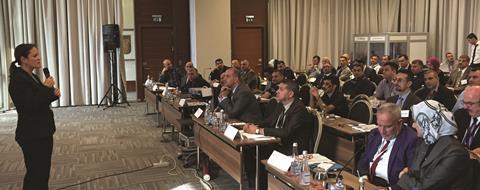
The OPCW’s education and outreach advisory board, of which Hay is a member, runs regular international workshops for young chemists. My workshops are typically highly interactive with case studies used to help participants engage with the process, he explains. ‘There are many really dry topics that you can find innovative ways of teaching.’ A favourite topic of his is pseudoephedrine synthesis. ‘Pseudoephedrine is an extract from the plant ma huang (Ephedra sinica) that has been used in Chinese medicine for thousands of years,’ Hay explains. ‘It’s a stimulant used in cough medicine to help relieve bronchial spasm.’ As the hit TV series Breaking bad highlighted, the conversion of pseudoephedrine to the street drug methamphetamine is an easy one for a trained chemist. He asks workshop participants to discuss whether they’d be curious to see if they could carry out the reaction. ‘I then say “Science is about reproducibility so would you make it again?” “Would you tell anyone?” And, finally: “Would you sell some?” Hopefully at that point everyone says: “Whoa, never!”’ Hay explains. Hay’s point is about personal responsibility, and he then goes on to talk to the young chemists about using their tools as chemists to the benefit of humankind.
The ACS has now run three international workshops about the Global Chemists’ Code of Ethics and related topics. Held in Morocco, Kenya and Australia, each event trained 25 participants to go on and teach others. ‘As of the end of last year, over 8000 chemists have benefited from these three trainings,’ says Ruskin. PNNL has also run chemical safety and security workshops for early career university chemists in countries including Iraq, Jordan, Kenya, Somalia, India, Turkey and Egypt.
To reach a much wider audience, in autumn 2017 PNNL launched a scenario-based computer training course, lasting around 25 minutes. ‘In the scenarios the learner is faced with ethical dilemmas that any chemist or chemical engineer might face in their normal course of business. They have to use the principles behind the Global Chemists’ Code of Ethics to identify what the right answer is for addressing the situation appropriately,’ explains Rodda.
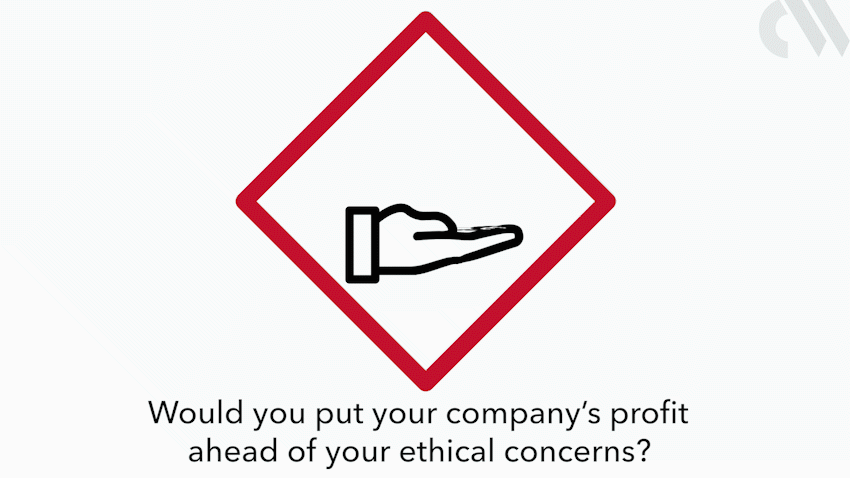
In this e-course, the user must help a fictional postgraduate student Maryam navigate disappearing chemicals suitable for trinitrotoluene production, an industrial sponsor trying to involve her in chemical weapon production, a professor pushing for results and a fellow student disposing of chemical waste inappropriately. Rodda foresees the tool finding use globally in universities and by companies to give ‘all staff a baseline understanding of the kind of behaviours that are expected’.
Universities challenged
The UK Engineering and Physical Sciences Research Council’s responsible innovation initiatives and degree programmes accredited by the RSC require ethics to be touched on in undergraduate chemistry courses under transferrable skills. But the potential dark use of synthetic chemicals do not get covered more than superficially.
Some European and US universities have started to address this. Five years ago, the University of Southampton chemistry department launched an Ethics in Science, Engineering and Technology: Jekyll and Hyde course for undergraduate and postgraduate students. It’s an optional module that can be taken by any student at any level, from any department across the university, explains module lead and inorganic chemistry teaching fellow Paul Duckmanton. ‘It’s owned by the chemistry department and joint-taught between chemistry and philosophy.’ This year around 50% of students taking the course are from chemistry, 30% from other science and engineering subjects, and 20% from non-scientific departments. The course explores the potential dual beneficial (Jekyll) and detrimental sides (Hyde) of scientific research; chemistry topics covered include Nobel’s dynamite and Haber’s chlorine.
An online course in development by the European Association of Chemical and Molecular Sciences (EuCheMS) ethics in chemistry working group will soon make it easier for all universities to teach ethics – including consideration of dual use – to postgraduate students. ‘The course will cover all aspects of good chemistry in terms of methodology, ethics, and social and environmental implications,’ explains Jan Mehlich, science ethicist at Tunghai University in Taiwan and lecturer for this online course.
‘It’s a module for the last year of master’s study or first year PhD students,’ explains Toby Underwood, the RSC accreditation and careers manager and a member of the EuCheMS ethics in chemistry working group. ‘It’s made up of 16 independent teaching units each consisting of a 45 minute lecture and some form of assessment, such as a quiz, at the end,’ he adds. The course will be piloted at a few European universities in the autumn 2018 term. ‘It will then be offered to all European universities through e-learning platforms such as Moodle,’ says Mehlich.
Fostering a speaking-up culture
Training people to consider all the potential ethical aspects of their work is one thing. But what about the role of bystanders? In the 2018 Belgian biomedical survey, 93% of academic respondents said they had observed misconduct among colleagues. But how many of them spoke up?
Universities and most workplaces have structures in place for reporting ethical concerns. Societies such as the RSC and ACS also offer advice to individual researchers, as do independent bodies such as the UK Research Integrity Office (UKRIO). But it isn’t always easy to speak up about ethical concerns regarding colleagues or employers.
Mary Gentile designed an approach for conquering this, described in her 2010 book Giving voice to values. Gentile, a professor at the Darden School of Business, part of the University of Virginia in the US, believes that most ethics courses fail to give participants the tools needed to voice ethical concerns. ‘Gentile’s underlying premise is that most people know when they see something presenting an ethical dilemma, but what they don’t always know is how to speak up,’ explains Blair Marks, ethics engagement and international operations director at the global aerospace and defence company Lockheed Martin.

The Giving voice to values technique teaches methods for handling ethical concerns and encourages one to practice doing so. ‘The more you do it, the more comfortable you’re going to be, so that when the time comes that you actually face an ethical dilemma, you know how to speak up,’ says Marks. Gentile designed her program for business schools, and Lockheed Martin was the first company to adapt it for training a workforce.
The technique’s popularity has since exploded. ‘Giving voice to values has now had over 1035 pilots in educational and business settings on all seven continents,’ says Gentile. While Lockheed Martin favours face-to-face annual training, many companies are using a six-part interactive and customizable online module developed by Gentile. In 2016, Unilever trialled the online tool in Nigeria. In 2017, it was expanded to nearly 1000 employees in Africa, and the company said it plans to roll it out globally in 2018.
Synthetic chemicals, and the chemists who produce them, play an integral role in every part of today’s society and deserve better acknowledgement for the good they do. But does that mean that those who produce them for solely positive reasons don’t have to think about unintended and harmful uses? Being aware and guarding against the potential misuse of chemistry would maximise the chances of this science being used solely for peaceful purposes – and would surely increase the chance of being recognised and rightly lauded.
Nina Notman is a science writer based in Salisbury, UK
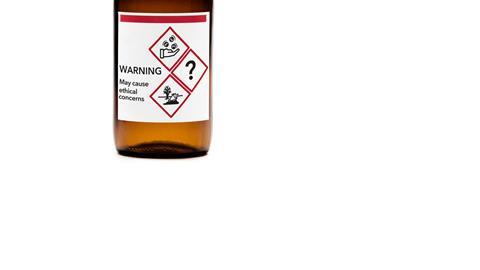



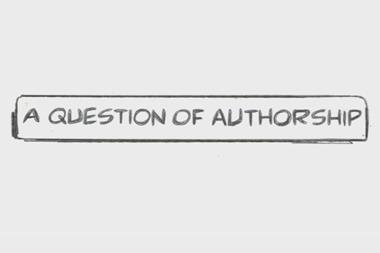








4 readers' comments